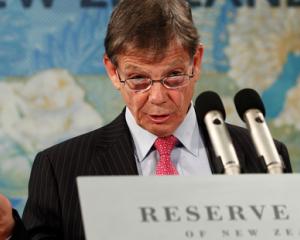
But Berl senior economist Ganesh Nana warned that calls were premature for a quick removal of monetary stimulus within the economy based on the Statistics New Zealand household labour force survey results.
"The rapid exchange rate response to today's statistics are also of concern. With the kiwi dollar now back above A80c, the . . . recovery in certain areas of manufacturing that we were beginning to see is again in jeopardy," he said from Wellington.
Statistics NZ figures showed that the unemployment rate dropped to 6% in the year ended March compared with 7.1% in the year ended December.
However, in Otago the news was not so good. The seasonally unadjusted figures went from 3.9% in December to 6.3% in March, perplexing Otago-Southland Employers Asso-ciation chief executive John Scandrett.
"These March figures have just been released so we have not had an opportunity to consult widely with our members on what might be behind this negative local movement. But there is early evidence to suggest that we may have seen a higher-than-usual fall-off on the level of seasonal work opportunities, particularly in the agricultural sector, that often occurs after the Christmas and New Year period."
In Southland, unemployment levels were in line with the national trend, improving to 3.3% from 4.3% in December, he said.
Rail and Maritime Transport Union general secretary Wayne Butson said the big spike in unemployment in the Otago region demonstrated the need to support rail industry jobs such as those at the Hillside workshops, in Dunedin.
"Hillside workshop is a major employer in Dunedin. This is the time to be backing Hillside, not walking away from it as we have seen from the Government's response this week to the Berl report on building rolling stock for Auckland," he said.
ASB economist Chris Tennent-Brown said the national survey figures confirmed for him that the labour market had turned.
The number of people employed increased by 22,000 in the three months ended March. That was the first quarter of job growth since December 2008.
Actual hours worked rose by 1.7% during the quarter, following falls in six out of the previous eight quarters.
"The fact that employment growth was underpinned by an increase in full-time employment highlights the definitive nature of the recovery in labour markets.
"Bar an unexpectedly restrictive Budget on May 20, we see little standing in the way of the Reserve Bank increasing the OCR [official cash rate] in June," he said.
The figures showed that part-time employment fell by 3000 and it appeared that the improvement in employment intentions seen in business surveys late last year was flowing through to actual hiring.
Firms were increasing both their staff numbers and the hours of existing employees, Mr Tennent-Brown said.
That was reflected in the decline in the number of under-employed people (part-time workers who would prefer to work more hours).
"Overall, the data indicates the slack that had developed in the labour market over the recession is now diminishing quicker than expected," he said.
Business New Zealand chief executive Phil O'Reilly welcomed the fall in unemployment and said the results were consistent with improvements in the manufacturing and service sectors in the same timeframe.
"This is of particular importance to the domestic economy. More people in jobs means more consumer confidence and better results for retailers and other businesses."







